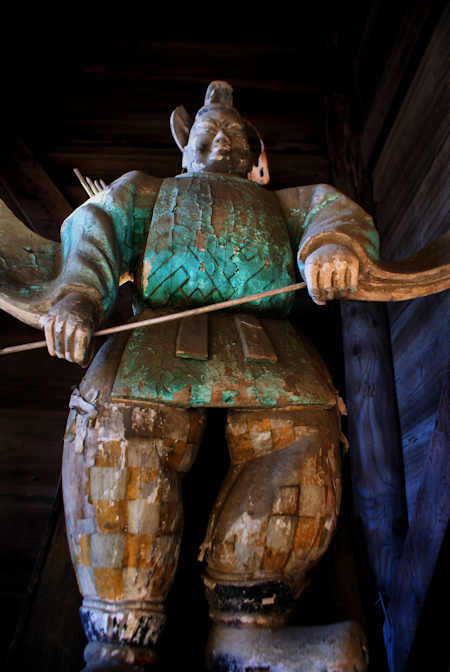Thursday, May 20, 2021
Umi Shrine
Monday, May 17, 2021
Itohara Memorial Museum
Itohara Memorial Museum
The Itohara were a family of high-ranking samurai in the service of the Matsue Domain during the Edo Period. Their base was in the mountains of Okuizumo where they were one of several samurai families that controlled the production, and export, of iron.
The museum at their property near Yokota display many of their artworks, everyday objects, and especially tea ceremony paraphernalia, armor, swords etc as befitting a high-ranking samurai family, but is mostly concerned with the historical production of iron.
Japan had very little iron-ore, but some areas, like here in Okuizumo, were rich in iron-sand, and a special type of forge technology was used to process the sand into iron and steel called a tatara forge.
Part of the output of a tatara forge is a kind of iron called tamahagane in Japanese. This is a vital ingredient in a true Japanese sword and cannot be produced by modern methods, so one single tatra forge is still in operation here in Okuizumo that produces all the tamahagane for swordsmiths.
There is a lot of material on display about historical tatara and such, and quite a lot of samurai possessions and artworks, kimonos etc, however very little info is in English.
The Itohara estate is a few miles from Izumo-Yokota Station on the JR Kisuki Line. Other related posts about Okuizumo can be found by clicking this link.
Saturday, May 15, 2021
Butsumokuji Temple 42 on the Shikoku Pilgrimage
Thursday, May 13, 2021
A Short Guide to Yamaga
Sakura-yu is a public hot spring in the town of Yamaga, a little north of Kumamoto City. It was originally built as a teahouse for the local Hosokawa lord about 380 years ago, but in 1868 was turned into a public hot spring.
 |
Tuesday, May 11, 2021
Buzen Kaido in Yamaga
Buzen
Buzen was the histoical name for a small province in the north of Kyushu, and the Buen kaido was a "road" that connected the south of Kyushu with the north and from there on to the rest of japan, specifically Osaka and Kyoto.
Saturday, May 8, 2021
Omiya Shrine Yamaga
Wednesday, May 5, 2021
Yachiyo-za Theatre
Yachiyo-za is a traditional type of theatre that is located in the hot spring resort town of Yamaga, not far from Kumamoto City.
Monday, May 3, 2021
Kongojoji Temple 100 on the Kyushu Pilgrimage




























































